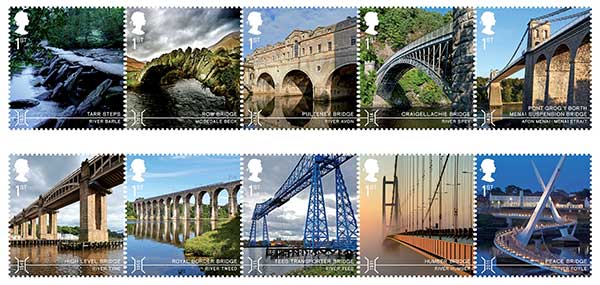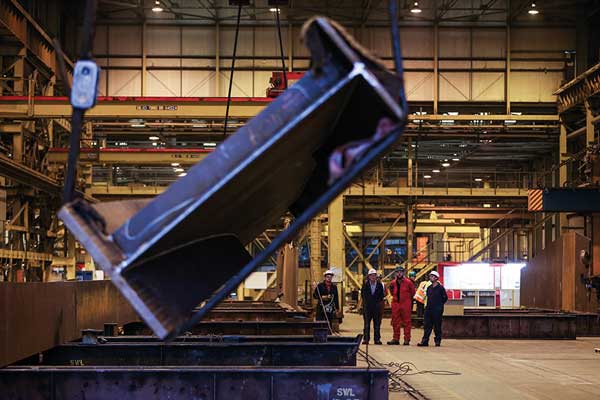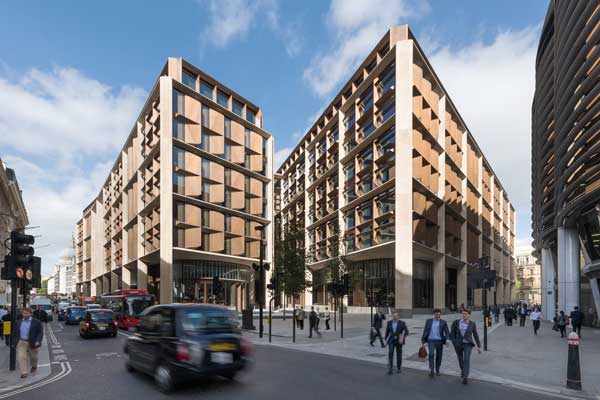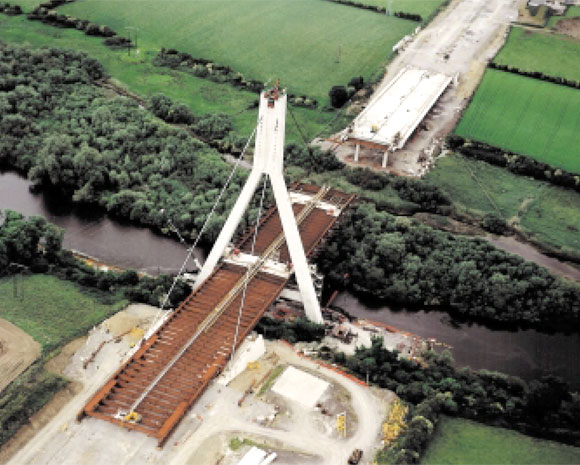News
Steel bridges adorn Royal Mail stamps
 The latest collection of first class stamps from the Royal Mail celebrates advances made in UK bridge engineering, acknowledges the role steelwork has played in the sector and features two Structural Steel Design Award (SSDA) winners.
The latest collection of first class stamps from the Royal Mail celebrates advances made in UK bridge engineering, acknowledges the role steelwork has played in the sector and features two Structural Steel Design Award (SSDA) winners.
The bridges featured on the stamps are: Tarr Steps in Exmoor; Cumbria’s Row Bridge; Pulteney Bridge, Bath; Craigellachie Bridge, Moray; Pont Grog y Borth (Menai Suspension Bridge); High Level Bridge, Newcastle-upon-Tyne; Royal Border Bridge, Berwick-upon-Tweed; Tees Transporter Bridge; Humber Bridge and the Peace Bridge, Derry/Londonderry.
Head of Stamps and Collectibles at Royal Mail Andrew Hammond said: “The story of Britain’s engineering genius can be found in its bridges. These new stamps celebrate 10 beautiful and ground-breaking landmarks that span centuries of our history.”
The most recently completed bridge to appear in the stamp series is the 2012 SSDA winning Peace Bridge that spans Northern Ireland’s River Foyle.
The iconic steel bridge’s tall masts overlap mid-river to form a symbolic ‘Handshake’ symbolising the linking of two divided communities in Derry/Londonderry.
With a total length of 2,220m and a central span of 1,410m the Humber Bridge is also featured on one of the stamps. It was for many years after its opening in 1981 the longest single-span suspension bridge in the world.
The steel structure, constructed by a team including Cleveland Bridge, has captured the imagination with its mighty scale, elegant minimal form and the fact that it spans one of England’s great natural boundaries.
Also featured is the Tees Transporter Bridge in Middesbrough which opened in 1911 is the longest remaining transporter bridge still in operation anywhere in the world.
The lattice-steel structure incorporates a pair of cantilevered trusses that span 259m – with a clearance above water of almost 49m – that are used to carry a ‘gondola’ across the river.
This unique design – executed by Sir William Arrol & Co. of Glasgow – was economic to construct and ensured that the crossing would not interfere with river traffic.












